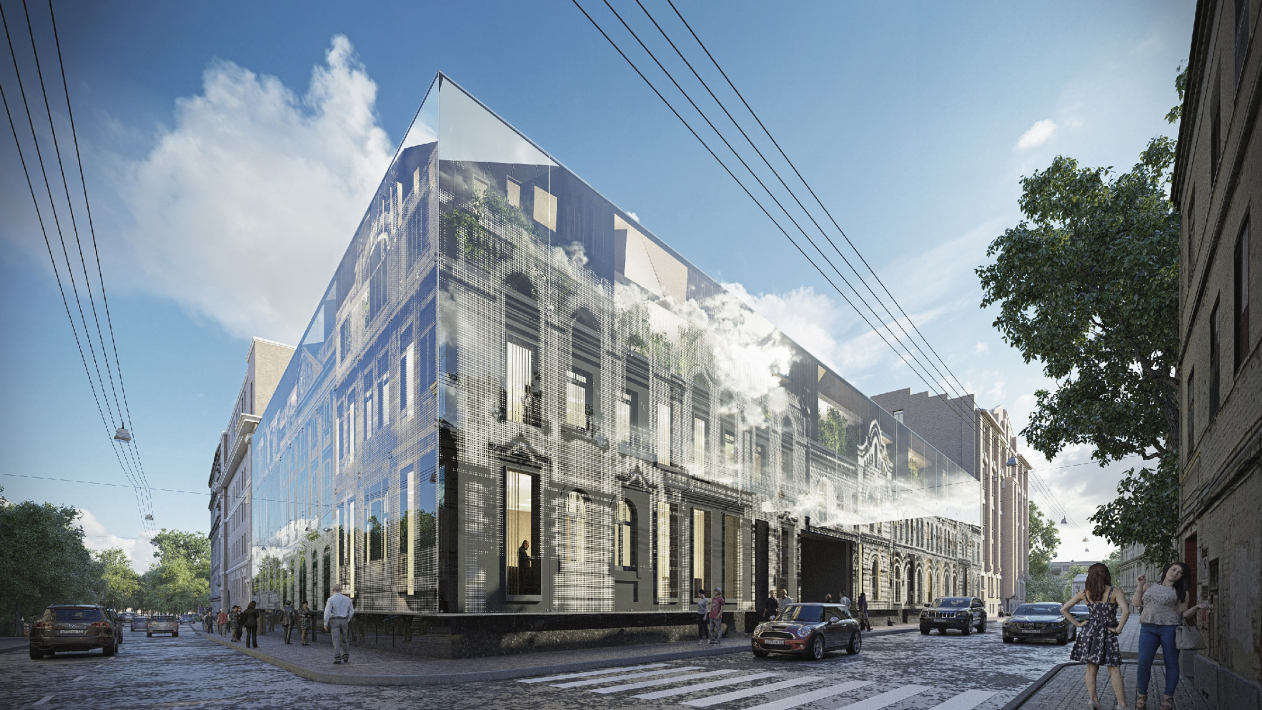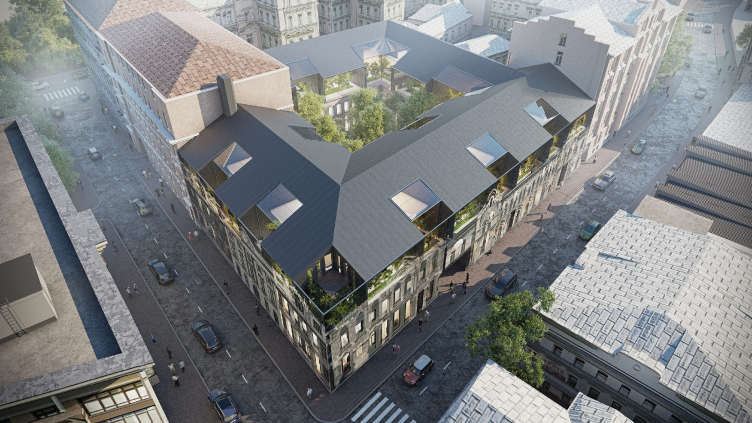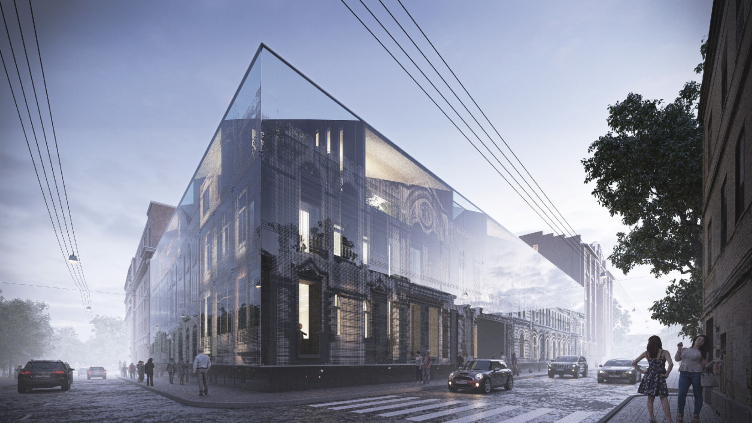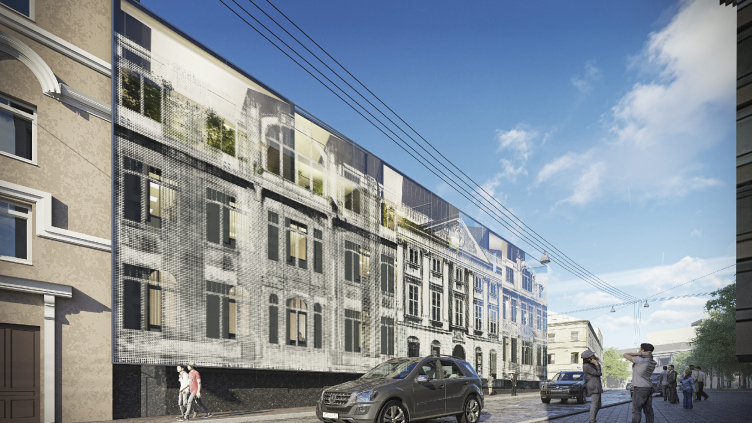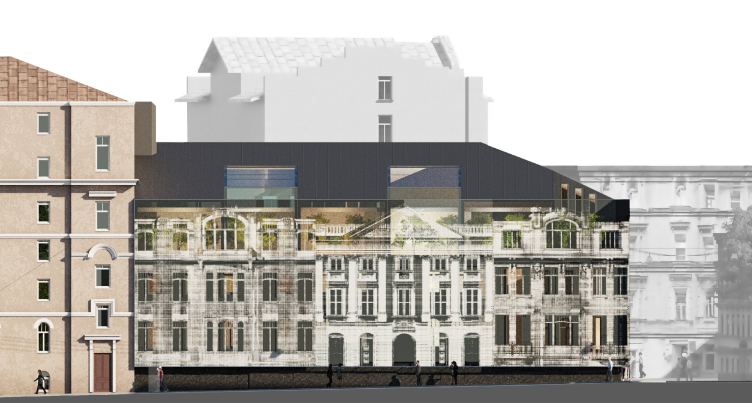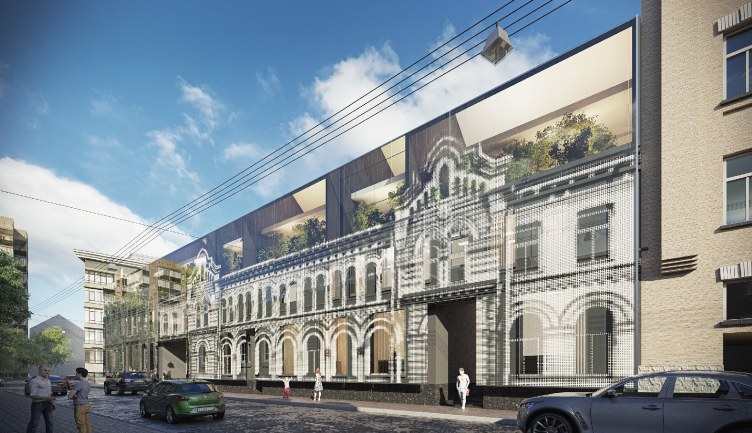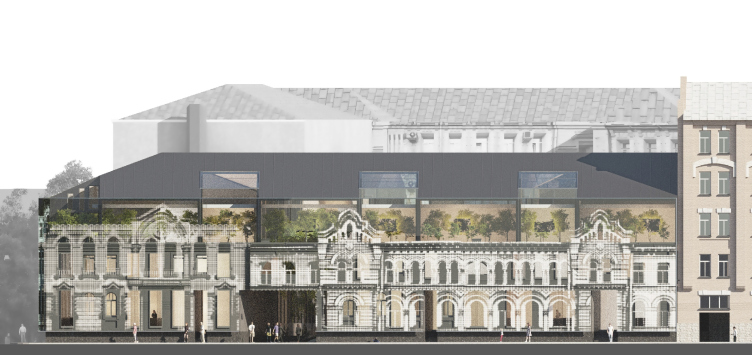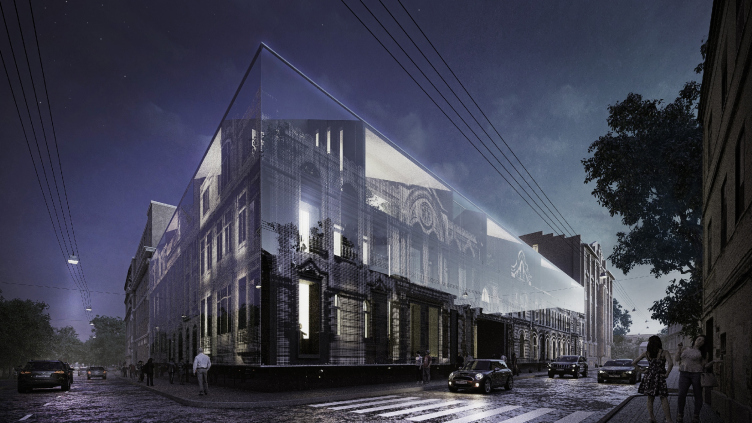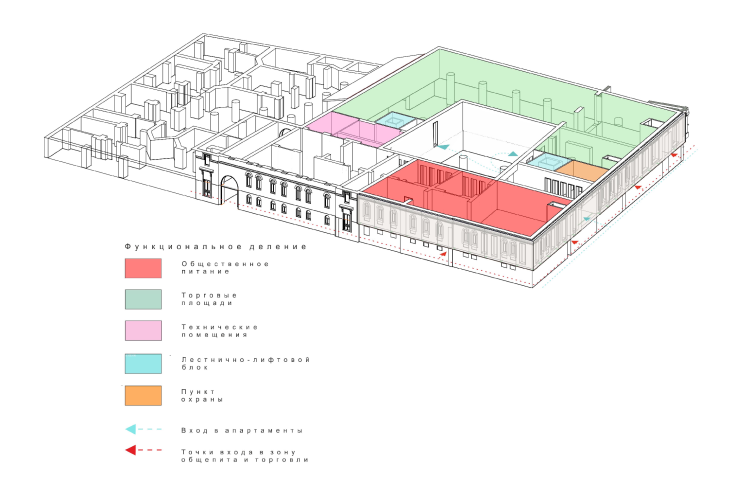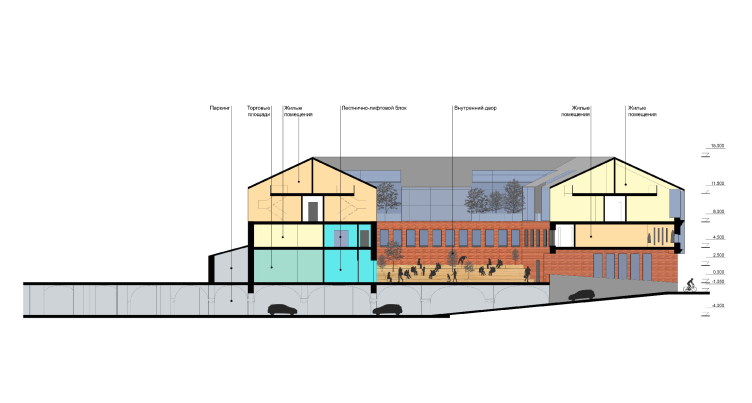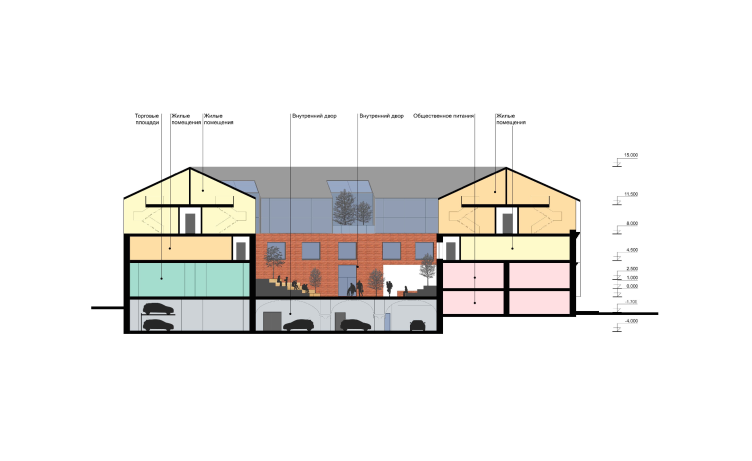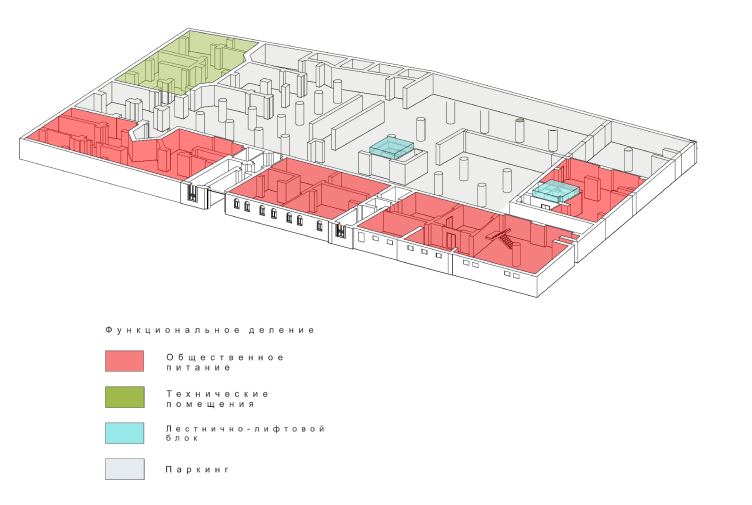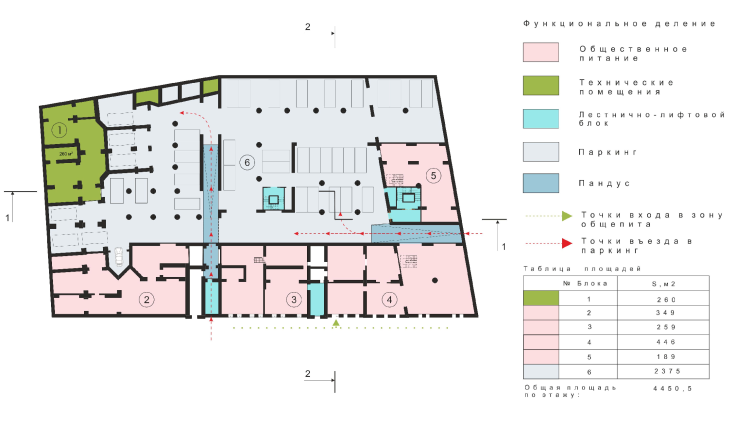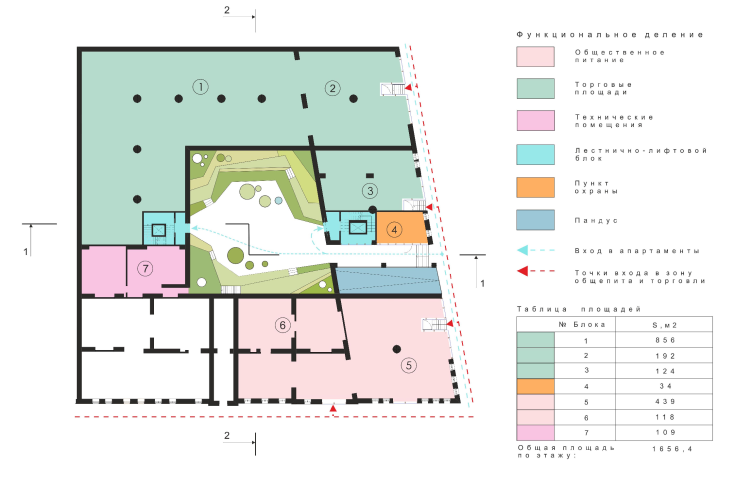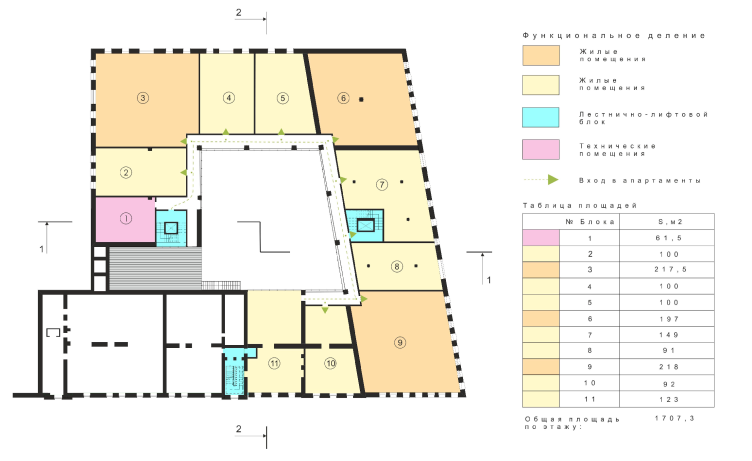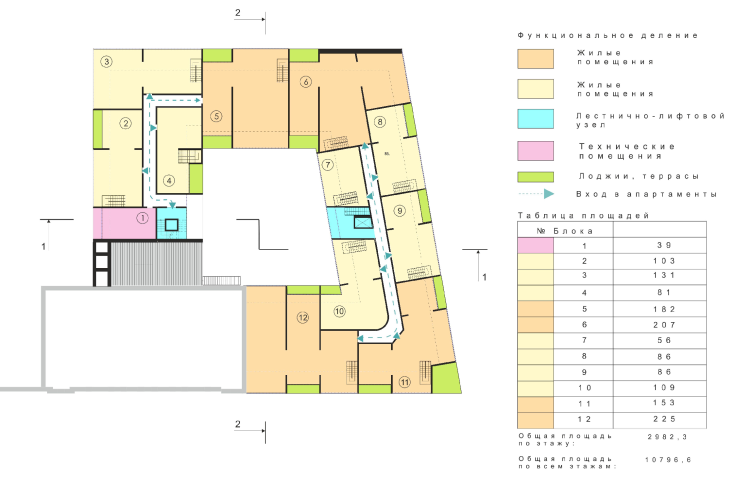In today's Russian town planning, there is hardly a more controversial notion than that of the "spirit of old Moscow". Whether this "spirit" actually exists or not, where to look for it, whether it is possible to keep it alive, whether it is worth restoring at all, "who is to blame", and "what to do" - all these eternal questions get different answers from the architects and municipality officials, from the journalists and the active citizens, from the Muscovites and visitors of the city - few people remain indifferent. The leaders of "Arch Group" Mikhail Krymov and Aleksey Goryainov are, of course, no exception. Aleksey Goryainov is absolutely positive that no genius loci (in the classic sense of the term) has been left in Moscow for years now, and it is not worth it deluding oneself; Mikhail Krymov is less categoric - "true, there are still a couple of nice little streets at the "Kitay-Gorod" area - but when answering the main question "what to do" they, just as co-authors should be, unanimous: "In Moscow's historical center we must build noninvasive projects but do this by modern means and make them speak the modern language".
"Architectural Spiritism" Project of renovating the property complex © Arch Group
"Architectural Spiritism" Project of renovating the property complex © Arch Group
This is why when the architects were offered to take part in the closed contest for the reconstruction of a historical building in the vicinity of the Petrovsky Boulevard, they perceived this task, among other things, as an opportunity to express their moral position. Besides, reconstruction is generally their "cup of tea" - the do a lot of successful and interesting rebuilding. Although, most often it is about renovating production facilities or office buildings that are as such of neither architectural nor cultural value. Here, however, the picture is quite different. The contest project - the two-story house with a courtyard in the neighborhood of the Petrovsky Boulevard - has long since been in a pre-emergency condition. It has been many times rebuilt and built over, so reconstructing it truly to the original is hardly realistic. But then again, if there had been such a task, Aleksey Goryainov and Mikhail Krymov would never have undertaken to do it: scientific restoration is not their thing. However, the idea initially announced by the customer sounded very attractive: in the environment of the historical buildings (with Despre wine cellars nearby and the house where Sophia Kovalevskaya was born), they were to build something modern but at the same time respecting the existing context. The task controversial and exciting. It is a time-proven rule that you cannot create something old anew: you will get yet another "still-born" simulacrum, one of those that the leaders of "Arch Group" derisively call "zombie" or "mutants". But been something old and irretrievably lost can be remembered and revoked from the nonexistence - recreated not literally but graphically and transparently. And, probably, the best material for such "materialization of ideas" is glass - a material that is creatively active, abstract, multi -option, and at the same time impeccably modern.
"Architectural Spiritism" Project of renovating the property complex © Arch Group
"Architectural Spiritism" Project of renovating the property complex © Arch Group
Thus, the main story that defined both the visual imagery and the cultural message of the project got represented by the original (seriously, this solution does not seen to have any parallels in the Russian architecture as yet) double facade. On both sides of the building, in front of the existing facade (it is planned that it will also be renovated but without the historical "immersion" - the architects simply will bring to order what is already there), a glass screen will appear. Upon this screen, the architects propose to apply the images of the monuments of architecture destroyed over the last several decades - a conceptual masterstroke that has no chances of being read by the general public but one that is pleasing to the authors. Besides, it is not just any flat images that would go onto the facade: the architects planned to select the photos of the buildings that would fit the project from the stylistic standpoint and with their graphic parameters, find the original drawings, make 3D models, render them realistically and then emboss into the glass. Meaning - they still got down to the restoration work, though virtual, but still raised to high art. "It a rather laconic but still an honest story" - says Mikhail Krymov.
Facade © Arch Group
"Architectural Spiritism" Project of renovating the property complex © Arch Group
We will add at this point: pretty expensive (which is normal for the unconventional high-quality architecture) and difficult to implement and operate. Still, however, according to Aleksey Goryainov, they generally like to choose the road less travelled: "Our projects have never been noted for directness or simplicity but we are not in the least intimidated by that - we are capable of handling the challenging tasks". The planar frameless facade is mounted on the spider fittings, the ages are embossed between two layers of glass, and that means that it will not get dirty or fade away with time; as for the problem of caring for the inside of the screen, the authors propose to solve it rather radically: create an airtight contour along the perimeter so that the dust and dirt could not physically get in. At the same time, the system of the second facade has an indisputable advantage: it regulates the temperature drop, and provides protection from the noise, the dust, and the wind. As far as the visual effect is concerned, it is well worth it. The openwork semitransparent pattern subtly interacts with the curves of the original inner facade (the window frames and the cornices are not much to look at but they are still there); the third constituent part of the picture, as is always the case with the glass surfaces, being the very surroundings, the sky, the sun, and the clouds. It is one picture by day and another by night: the backlit background becomes "the main hero", the pattern of the glass screen does not disappear altogether but become takes on an even more ghost-like quality.
Facade © Arch Group
"Architectural Spiritism" Project of renovating the property complex © Arch Group
According to the architectural and planning solution, the first floor of the building will be occupied by cafés and shops, and the second - by apartments (in addition to the existing ones, the authors propose to make extra windows); besides, there will be yet another top floor with two-level apartments in it. As for the mansards, the authors say that their relationship with them is complicated - they downright dislike the jagged roof silhouette that is typical for such buildings. So, setting the task of doing away with the "mansard quality", the architects found an elegant solution that consists in dissecting the usual gable roof with the intercepts of terraces. Thanks to this, when viewed from the street, the top floor takes on a "rhythmic" quality, at the same time luckily avoiding falling into different segments because of the noise and dust protecting glass screen that holds it all together. And the plants that will be there on the terraces will enrich the visual image of the house even more.
The closed yard of the house is, though shallow, still a courtyard; because of that, in order to avoid making the future inhabitants look into each other's windows, the architects run along the perimeter of the second floor a warm glazed gallery, from which, after exiting the elevator , one can ultimately access the apartments' doors. This move aimed at embellishing the vertical surfaces, is echoed by the same-kind terraces of the mansard apartments plus the glass blocks connected to them. This solution allows for the architects to solve the problem of the gable ceilings overhanging at the second level of the apartments. As for the inner courtyard itself, the architects turn it into a cozy recreation area with lawns, trees, and terraces on wooden floors. Thanks to the broad arch (according to the project, the pedestrian entrance is situated next to the ramp that leads to the underground garage) the yard is viewable from the street - a nice little detail that adds to the image of the house a feeling a cozy and yet contemporary living environment.
Selecting the name for their project, Aleksey Goryainov and Mikhail Krymov opted for "Architectural Spiritism". Well, such reincarnation of the "spirit of old Moscow" has quite the right to exist.
